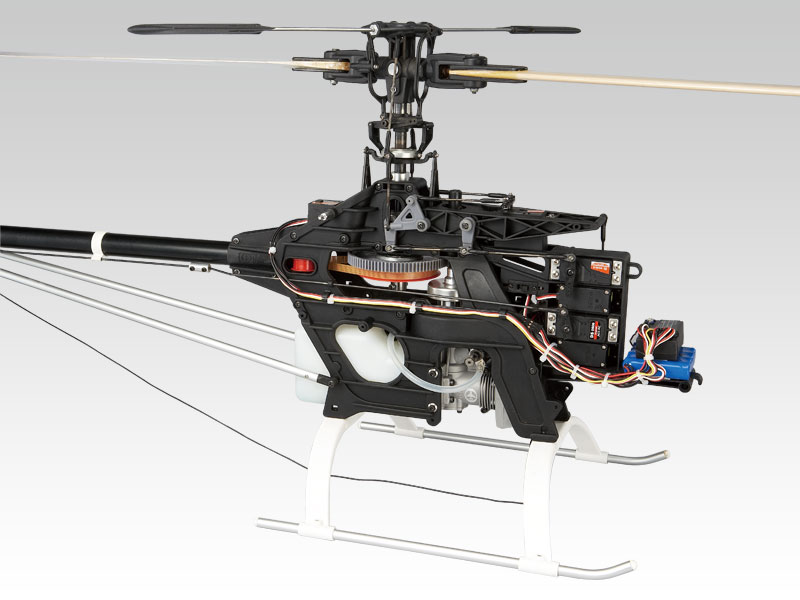Not Necessarily
Another common misconception about helicopters, is that they are mechanically complicated, hard to set up, and unreliable. Just as with the idea that they are hard to fly, this was true in the past, but things have changed.
I will reuse this image of the Thunder Tiger Raptor 30, showing an old fashioned mechanical swashplate mixing system, along with a flybar stabilization system. Admittedly, there is a LOT going on here. These machines required much skill to assemble and maintain. And there were a lot of potential failure points.

But a lot has changed since then. Computerized radios and electronic stabilization have removed the need for much of this. Today’s helicopters, have direct to swash servo control, and flybarless heads. This not only makes the machines easier to built and set up, but every part removed, is one less part which can potentially fail, or require maintenance. Furthermore, simpler construction has made the powertrain and control systems much more compact.
The Procyon design, takes this to another level, never before seen in a large UAV helicopter. Simplicity and low parts count was one of the primary design goals. Along with ruggedness and reliability. Here, we will present the CAD model of all of the moving parts of the Procyon 800E. This is it, all the moving parts associated with the main rotor system.

Here you can see the main motor with a pulley installed, and a single-stage belt drive to the main gear. There is a fixed idler pulley, and belt tension is simply set by sliding the main motor on it’s mount. There is a one-way auto-rotation bearing between the main pulley and the main shaft. On the control side, you have 3 servos, with direct control linkages to the swashplate. There are two swash driver arms, and then the pitch control links to the main grips.
That’s it. That’s all there is.
One thing that you may notice is missing, is the tail rotor drive. This has been completely eliminated. The Procyon 800E features a direct drive tail rotor system, where all the moving parts are shown here:
Here, you can see the direct drive motor, the exact same component as any multirotor would use. In this case it has a longer shaft with the tail rotor directly mounted. You can also see the rudder servo, linkage, and the pitch slider mechanism which articulates the blades to change their pitch. Again, there are very few parts here, and very easy to understand.
There are components which should be inspected regularly, as you would with any helicopter, but there are just far fewer of them. Mainly the linkages, head and tail blade grips, swashplate, and the few bolts holding it all together. Only a few bearings, 3 on the tail shaft, and 3 on the main shaft. Main belt tension should be checked periodically, but there is no tail belt tension to be checked and adjusted with every temperature change.
As you can see, modern helicopters are not that scary anymore. They are still more complicated than a quadcopter, and require some training to operate and maintain. But this is easily paid back by virtue of their superior flight characteristics.
2 thoughts on “Aren’t Helicopters Complicated?”
Comments are closed.